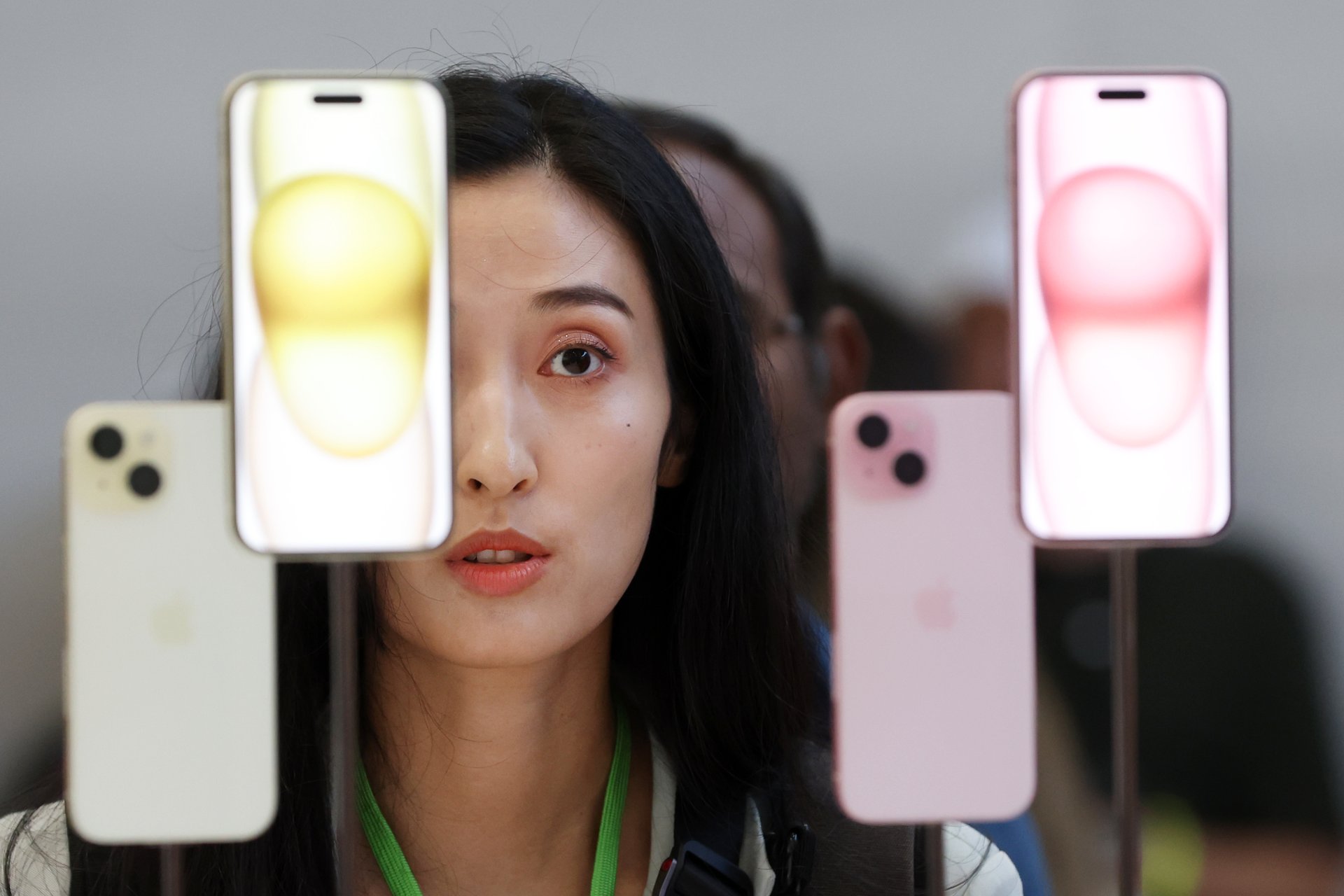Foxconn is shipping iPhones from India to the U.S. to avoid China tariffs, report says
As President Donald Trump's tariffs continue to threaten Apple's global supply chain, its pivot into India (and out of China) is paying off

(Photo by Justin Sullivan/Getty Images)
Apple’s supply chain is undergoing a high-stakes pivot — right under the White House’s nose. Reuters reports that between March and May 2025, Foxconn, one of the Apple’s biggest suppliers, shipped $3.2 billion worth of iPhones from India, with 97% bound for U.S. soil.
Suggested Reading
That’s not just diversification slack — it’s strategic re-engineering, timed for maximum tariff insulation. Apple said in late April that it wants to shift all production for U.S.-sold iPhones from China to India by the end of 2026 as the trade war between the U.S. and China was escalating.
Related Content
Only a year ago, India-made iPhones followed global routes (across Europe and elsewhere). Now, nearly all units made in the country are landing in the U.S., a dramatic swing from the 50% U.S.-bound average in 2024. May’s shipments alone hit almost $1 billion, just shy of the record $1.3 billion in March —perhaps proof that Apple shift isn’t seasonal but systemic.
Why the urgency? President Donald Trump’s tariffs — now at 55% on Chinese imports after recent trade talks, after reaching as high as 145% — have had Apple scrambling for an outlet. India’s 10% base tariff is far more manageable, and the country is working to negotiate a deal to avoid the 26% “reciprocal” levy Trump announced and then paused during his “Liberation Day” event in early April.
Trump has threatened Apple with 25% tariffs if it doesn’t make its iPhones in the U.S. Following a report by The Financial Times that Foxconn would spend $1.5 billion on a plant in India for iPhones, Trump seethed on social media.
“I have long ago informed Tim Cook of Apple that I expect their iPhone’s that will be sold in the United States of America will be manufactured and built in the United States, not India, or anyplace else. If that is not the case, a Tariff of at least 25% must be paid by Apple to the U.S.,” Trump wrote in a TruthSocial post.
He separately said he told CEO Tim Cook: “We are not interested in you building in India. India can take care of themselves; they are doing very well, and we want you to build here.” The souring relationship between the two comes after Trump said he talked to Cook when the White House announced the original 90-day pause on most reciprocal tariffs between the U.S. and China — the president claimed Cook said he wants to build “lots of plants” in the U.S.
Still, moving iPhone production to the U.S. is near impossible at this point. Even those on his side of the aisle agree; National Review contributor Pradheep J. Shanker tweeted that “Trump simply doesn’t understand the numbers of how this works at all. There is no way Apple moves production to the U.S. any time soon.”
The bigger picture here regarding India is bold.
Just five months into 2025, Foxconn has dispatched $4.4 billion in iPhones from India, eclipsing all of 2024’s $3.7 billion. Analysts project “made‑in‑India” iPhones will account for 25–30% of global shipments this year — up from about 18% in 2024.
Still, India isn’t China. Manufacturing costs remain steep, thanks to high component duties and thorny infrastructure, and Apple still relies on China for roughly 80% of U.S. iPhone sales. Yet the company’s shift isn’t built on cost alone — it’s geopolitical hedging. As long as U.S.–China trade tensions remain incredibly complicated (and increasingly likely to change on a single tweet), India offers a tariff-native haven.
Foxconn’s India move aligns with Prime Minister Narendra Modi’s “Make in India” vision and Foxconn’s multibillion-dollar investment plans in Tamil Nadu, Karnataka, and Telangana. Still, high costs of importing mobile phone components could hinder plans.
Apple is no longer treating India as Plan B — it’s Plan A under pressure. And as long as Washington swings the tariff needle, expect Foxconn’s India output, bolstered by private jets and customs fast lanes, to keep rerouting iPhones out of China and into U.S. hands.
